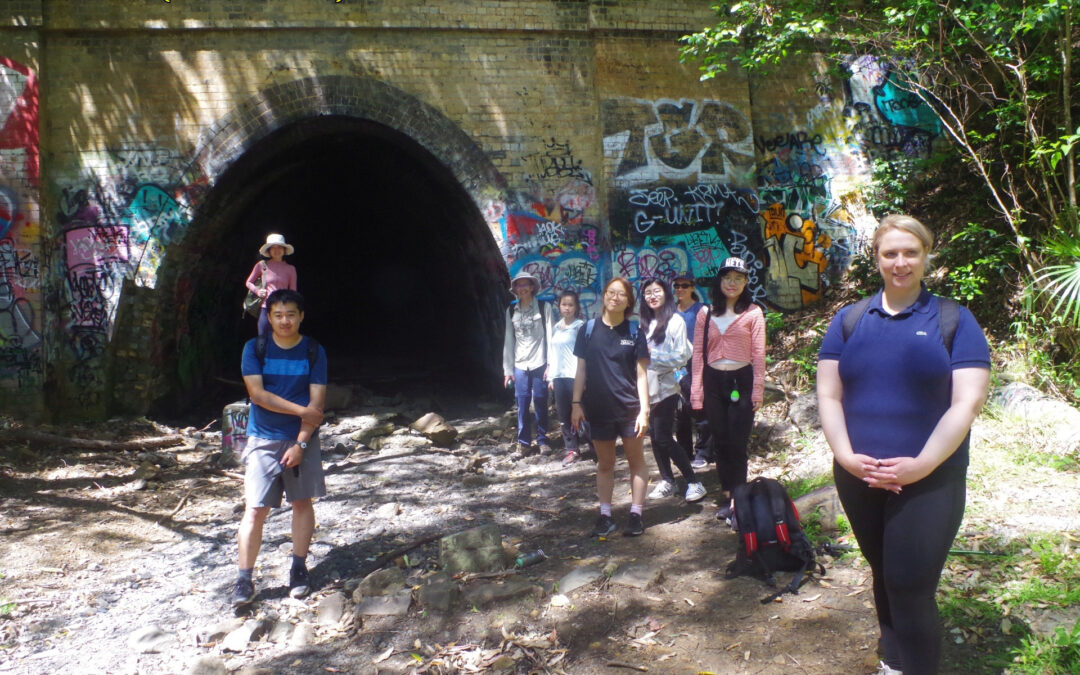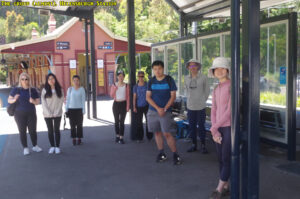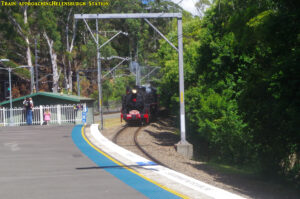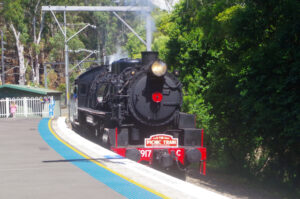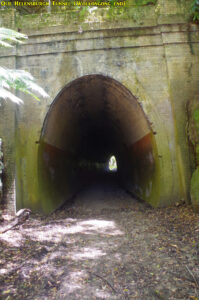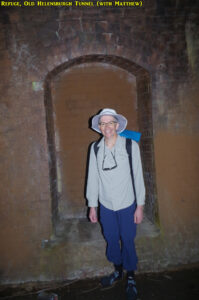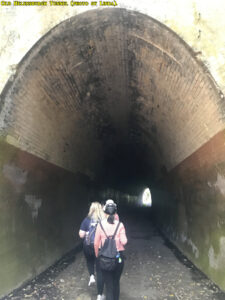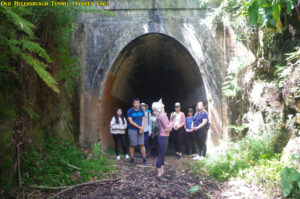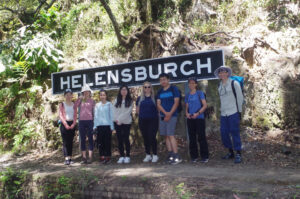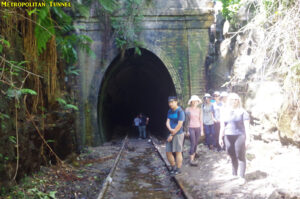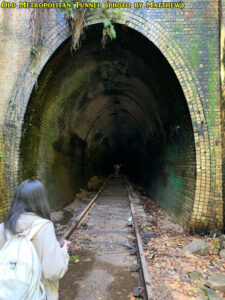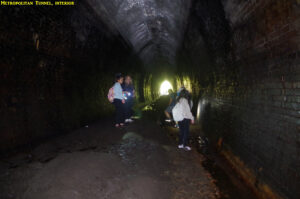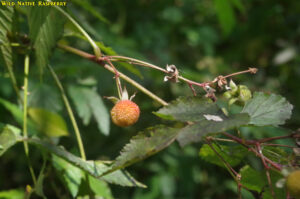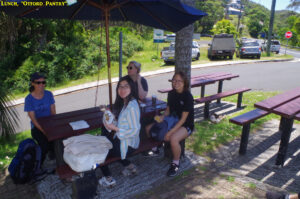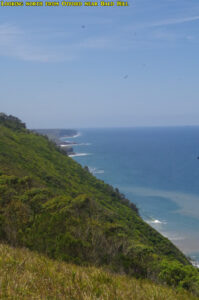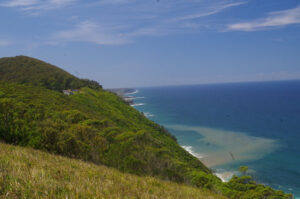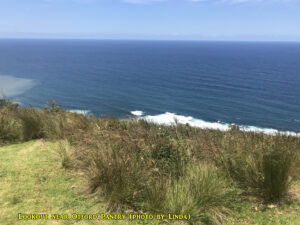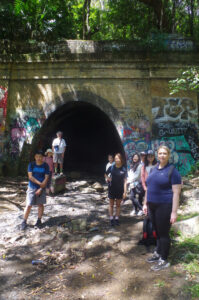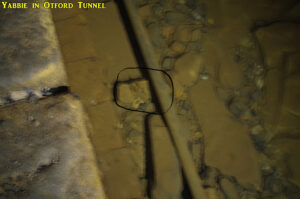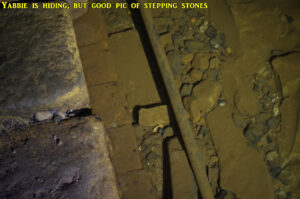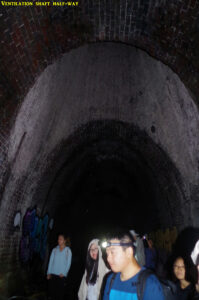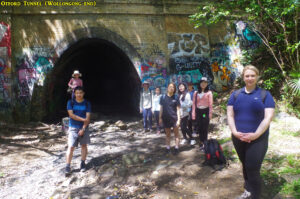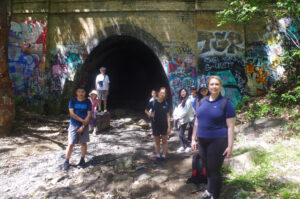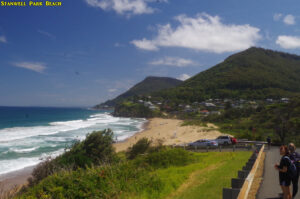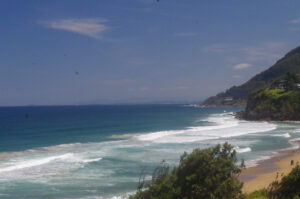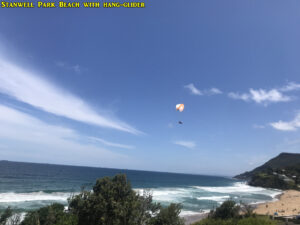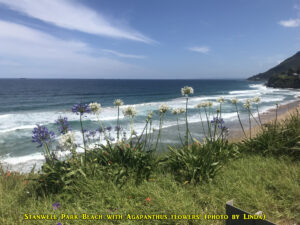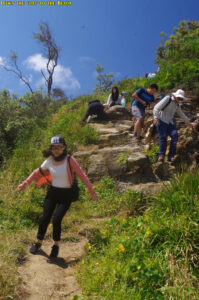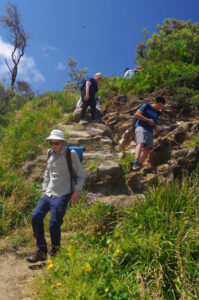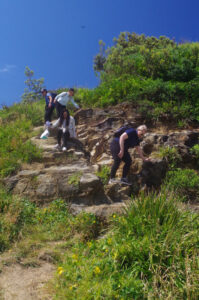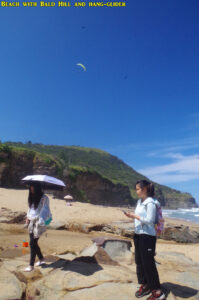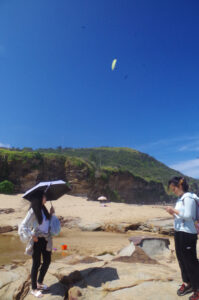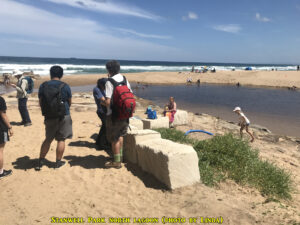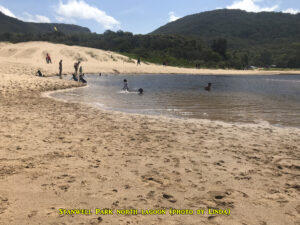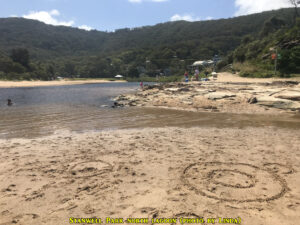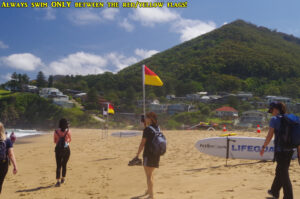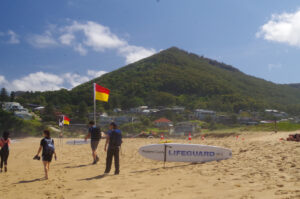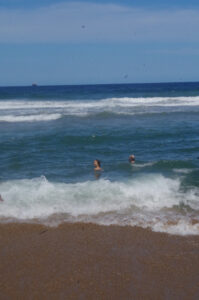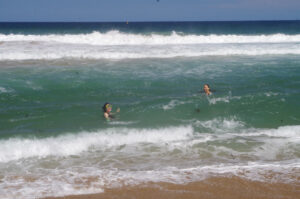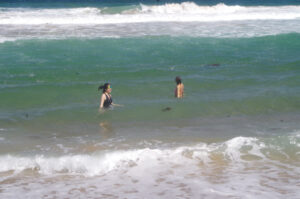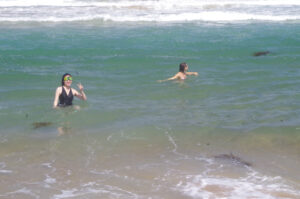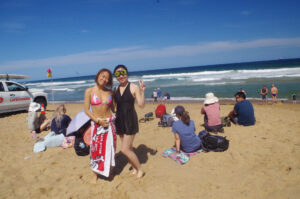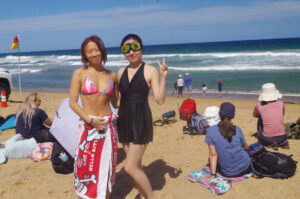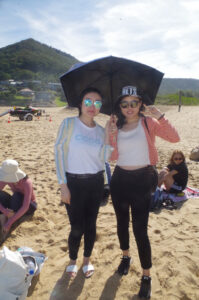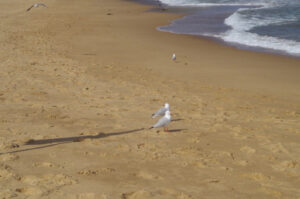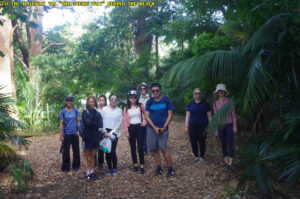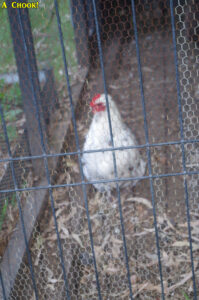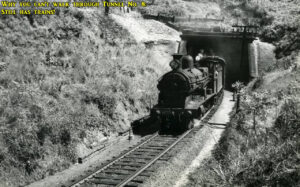Date: 26/11/2022
Trip leader: Bruce Stafford
Party: Andrew, Cathie, Hoyori, Jiaxuan, Victoria (Jiaye), Matthew, Michelle I, Michelle C, Linda (Tianjiao)
Photos: by Matthew
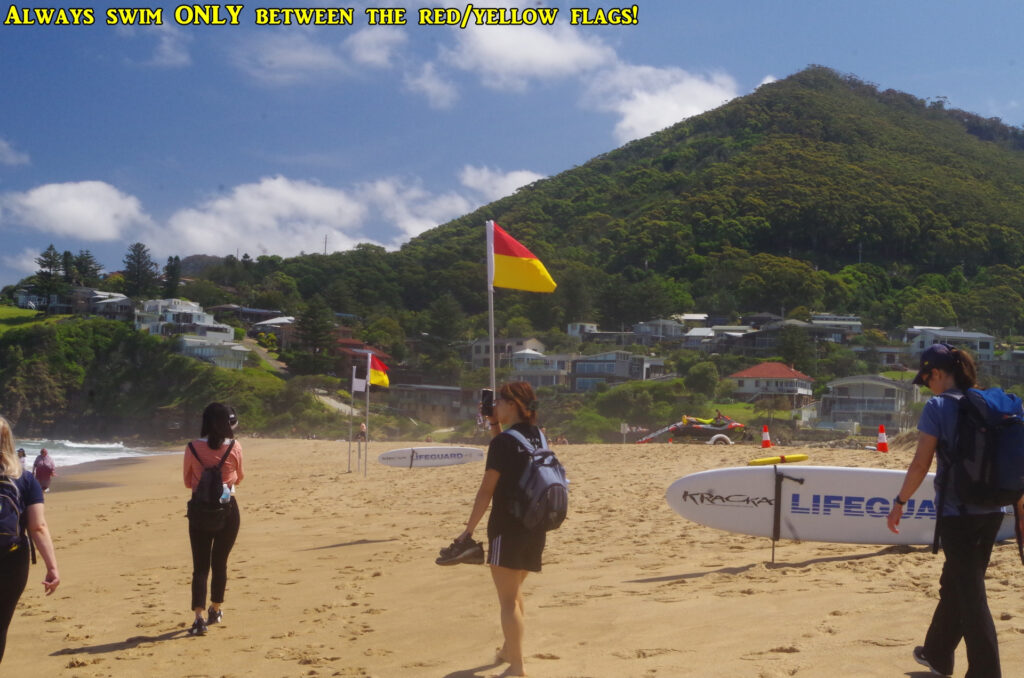
Helensburgh to Stanwell Park Beach SATURDAY 26/11/2022.
Another nice day picked for this trip, with a warm sunny day but not too hot.
We caught the 9.33am train from Central, this time from the open air platform 22 due to trackwork, and thus spared the incessant bombardment of noise from ads from the big screens at the normal underground platforms; a good omen for the day. And it turned out that way overall, too. People got on at various stations along the way to Helensburgh, with the train running late which made it easier for almost everyone to get it without too much rushing. Hoyori though got caught up in heavy traffic in The Shire (as Cathie almost did too) and had to be content with getting the next train an hour later to meet us at Otford.
So we got out at Helensburgh and of course there was the obligatory toilet stop, but also a short stop to change into old shoes and socks by Matthew and myself in preparation for the muddy walk through Metropolitan Tunnel. The others decided to chance it with the shoes they would wear the whole day. Meanwhile a steam train passed through following our train to Kiama. So off we went for the 5 minute walk to the first tunnel, Old Helensburgh Tunnel (No.3 of the original 8 old tunnels). It is not very exciting, being only 80 metres long and having no glow worms. It is not possible to walk through it one way as a formidable barrier is placed about 25 metres after its Sydney end, probably to deter 4WD drivers barrelling through and suddenly ending up in adjacent Wilson’s Creek! So after getting Matthew to pose in one of the tunnel refuges, we turned back to go to Metropolitan Tunnel (No.4) close by. Also near its entrance are wild native Raspberry vines with fruit, mostly green but a couple of ripe ones which a couple of us tried (they are OK). Then on to the Tunnel, and entered along the water soaked tracks, although thanks to a run of sunny weather the past week, were not too wet. It was different inside though once the tracks finished; the mud can be thick and the consistencey of porridge (one of Matthew’s photos shows this clearly). It is in fact easier and afer to walk in the little stream that runs along the tunnel floor and has a gravel base. But of course the price is getting your shoes wet. We went inside far enough to see a few glowworms on the ceiling, but their display was not as good as seen on past walks. This 624 metre long tunnel cannot be walked from one end to the other as it is blocked off at the Wollongong end by a wall put there by the nearby coal mine.
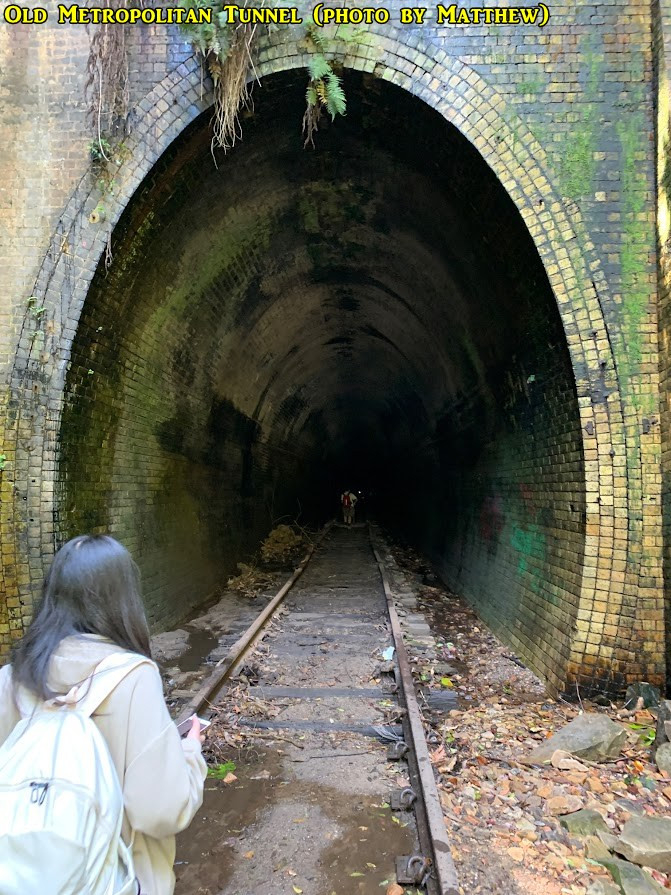
Mindful of the need to get the next train onwards to Otford, we left the tunnel without going too far in and returned to Helensburgh Station. Fortunately, in a way, that train was also late so there was no rush and we reached the Station with enough time. So it was then just one stop down the line to Otford where we met up with Hoyori. Then it was off to the “Otford Pantry” going the easier way past the school and up Domville Road. It’s longer by half a km, but a slightly easier gradient than going straight up to Lady Wakehurst Drive via Beaumont Road, the usual way. (Also noted a lack of people getting off the train at Otford to go to Figure 8 Pool; that’s likely because the Coast Track past Otford Lookout is still closed). At Otford Pantry we picked up some coffees and took advantage of the shaded seats to have lunch there rather than out in the sun overlooking the ocean (which we did after lunch). I also brought out some of my little sugar bananas (home grown) and sopme of the group tried them and found them nice.
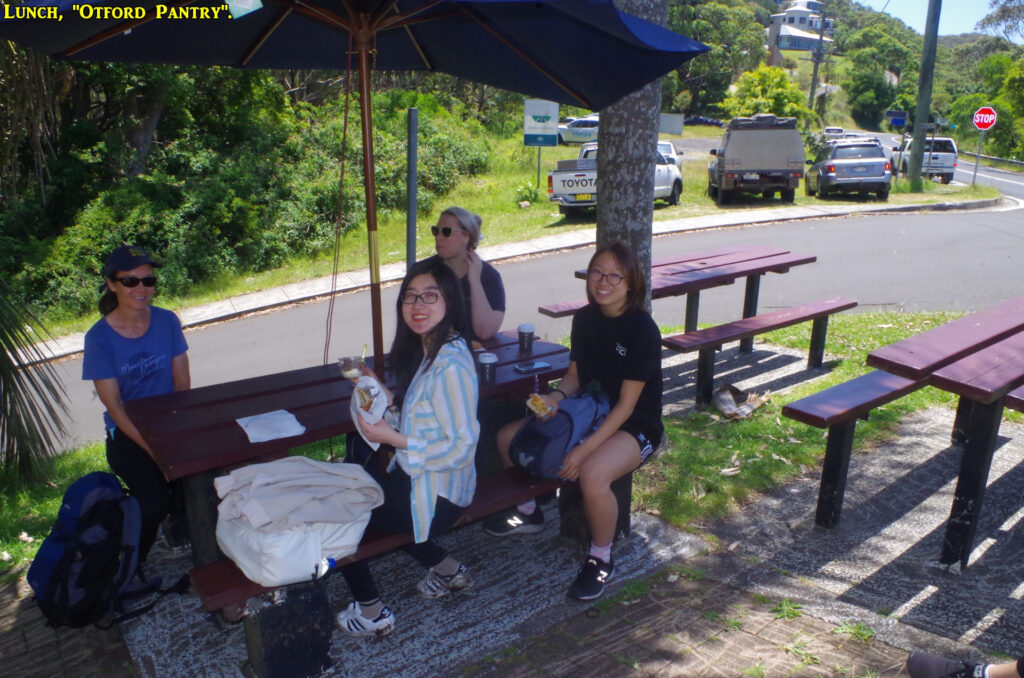
So after lunch we went across the road to take in the view over the ocean and north along the coast. It is not quite as good as Otford Lookout (especially looking south), but that lookout is an extra 1km return walk along the main road in the sun which was now heating up. So, knowing that views are also possible near Stanwell Park Beach, we gave it a miss and headed for out third tunnel, Otford Tunnel (No.7). This is the longest of all the original 8 tunnels at 1.5km, and until the 1980’s was the longest single-track rail tunnel in Australia (although closed to trains in 1920). It is also totally dark and once inside, the Wollongong end can’t be seen as there is a bend at that end. There is also still a fair amount of rubbish and wires left over from when it was used as a mushroom farm some decades ago, so a lot of care is needed (and torches of course) to avoid tripping on them; definitely not a place for clowning about or “powering on ahead”. The floor is not (for the most part) muddy like Metropolitan Tunnel earler, and is comparatively dry as the drainage system still works, and many of the stone blocks of the drain cover remain intact. There are though still many rough spots, and occasional stepping into water where the drain is still open. It rises (in the direction of Sydney) on a steady 1 in 40 gradient so easy for walking but would have been awful in a steam train going up that gradient! That’s why it was eventually replaced and closed.
So in we went for a 30 minute walk through this tunnel, torches on, and immediately noticed how much cooler the air was, with a slight breeze. At one point my head torch must have lost a clip and started hanging off my head, then it failed altogether, apparently from a loose connection. So I had to rely on a weaker backup torch plus light from someone behind me. Looking into the drain I spotted a Yabbie (I knew they are here from our last trip here 2 years ago). It was difficult to photograph as light from torches caused it to hide under cables and rocks (see my photo). We reached the halfway point which is marked by weak light coming from the sky via a ventilation shaft (and also a bathtub!). At that point my head torch suddenly started working again although I had to hold it rather than wear it on my head. Then we continued on until light started appearing around the bend, and then we were back out in the open at the end of Chellow Dean Avenue (which is closed to vehicles here).
A noticeable feature of the Wollongong end of this tunnel is the square concrete casement just inside the entrance. It was constructed by the mushroom farm people to regain access after that section of roof was blown down by the Army in World War 2 in an experiment to see if it would work (as if it wouldn’t!). The idea was to see how easy it would be to blow down railway tunnels in case the Japanese invaded. In reality, the Japanese Army utterly rejected any plan to invade Australia, but keeping the threat alive helped propaganda and defense production during the war!
A brief summary of the old Illawarra tunnels is given here: http://www.visitsydneyaustralia.com.au/lost-rail-orford.html If you are wondering why I mention 8 tunnels but this website mentions only seven, the 8th and last one, Coalcliff/Clifton Tunnel (1km long) is still used by trains as per my last photo from the “Illawarra Mercury” paper; it still looks the same today as in that 1966 photo except that now it has electric trains. (Incidentally, both the loco in that photo [3295] and the one approaching Helensburgh Station in my second and third photos [5917] were both built by Baldwin of Philadelphia, USA, but 50 years apart).
After a break and photostop we headed back down Chellow Dean Avenue and passed by the spot where the link track comes down from Bald Hill above, and which Sunil Jassal calls a “goat track”. Curiously there were two entrances to it close together, one roped off with red flags and one not, but no sign explaining why. I assumed it was to stop motorised trail bike riders, but later on I found that the Bald Hill Track is being upgraded from there up to the top of Bald Hill as part of the new “Great Southern Walk” which will link Bundeena and Kamay NP with Bulli Tops, a distance of 67km. So Sunil’s “goat track” will no longer be a goat track (but still very steep).
Eventually via another Council bypass track we made it to the top of the small headland at the north end of Stanwell Park Beach, and clambered down the short steep track on the cliff face to reach the beach itself. There was a minor drama when Michelle I. found that her mobile phone was missing. She was ceratin she had it a few minutes earlier so it must have fallen out of her pocket going down the cliff track. She went back up and luckily found it.
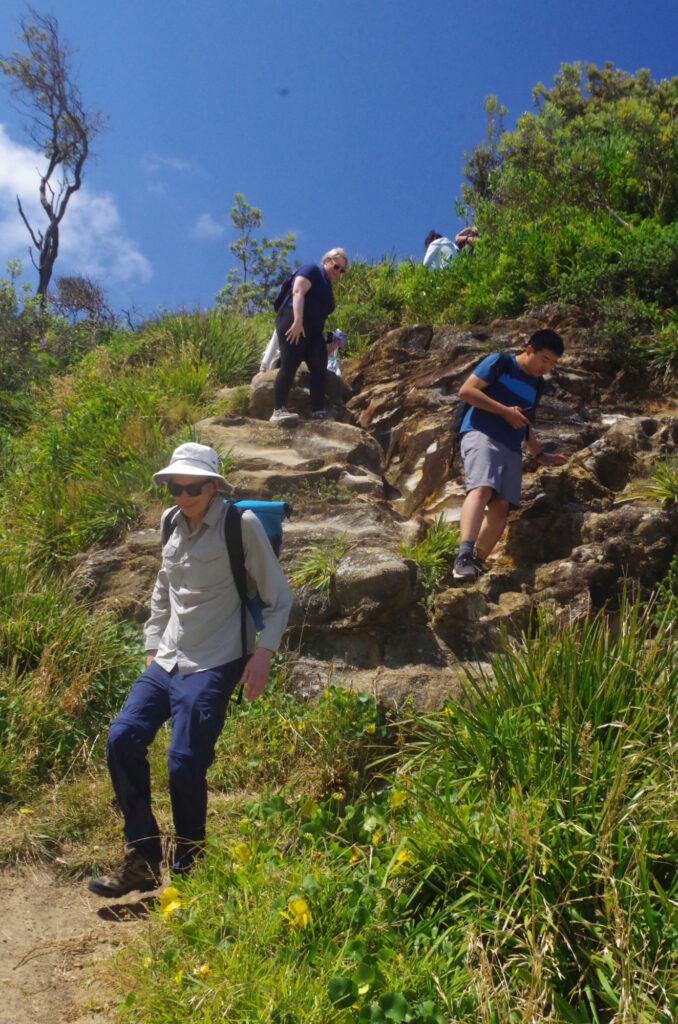
Despite a high but outgoing tide we crossed the mouth of the lagoon there without getting feet wet, and walked along the sandy beach. I noticed that no one seemed to be in the water swimming (and right in front of us was a strong rip) so I asked a life guard there if the beach was closed. He said no, there are flags a bit further down the beach. So down we went to the beach to the red and yellw flags and settled down for a rest.Changing into swim clothes, Matthew, Linda, Hoyori and myself went for a swim. The water felt cold at first but was fine once we got used to it. Walking back to the change room however I decided to do it without shoes. Bad mistake!. The darker sand felt rather warm underfoot, but the bitumen road I had to cross was positively hot! I will know not to be lazy again and will put my shoes on!
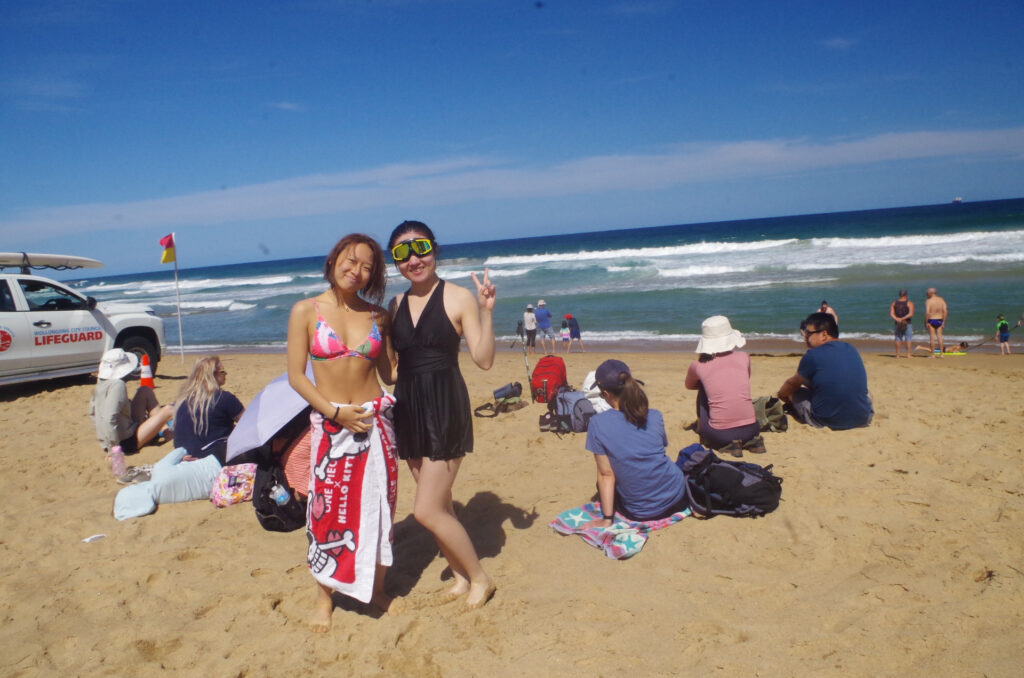
After a good break and swim we started off for the final part of the walk to Stanwell Park Railway. As we were not pressed for time I led the group along the “scenic” route rather than straight up Station Street. We walked along a shady pathway through the extensive park behind the beach (one of the largest at any beach along the coast), then along a wide trail through palms, and then left at the tennis courts up a short dirt track to a Council reserve behind some houses, complete with barking dogs – and chooks! One backyard had a chookyard with three chooks in it backing onto the reserve, and we stopped and I gave the chooks a bit of grass to eat, which they liked. After the chooks we went along a short alleyway called ‘Watergum Grove” to reach Station Street and Lawrence Hargrave Drive (which runs along where the first railway station was until 1920). With still some time to spare we had a break at the cafe on the corner, and Cathie and I bought coffees. Cathie ordered hers and I added on my order. When Cathie paid, it seemed rather cheap for two coffees. Yes, you guessed it, the cafe owner wasn’t listening and didn’t do my order! It was redone and fortunately as the cafe was not busy it came quickly (and the cafe gets slugged for two commissions by the credit card company instead of just one, because he didn’t listen).
After the coffee break we then resumed our walk uphill to the (present) railway station which took us only 9 minutes, and then found we still had to wait 15 minutes as the train was a few minutes late (that’s about normal for the South Coast Line!). From there it was just a matter of returning back home for everyone, with people getting off at various stations along the way.
Everyone enjoyed this interesting and unusual walk with a lot included in a relatively short distance, We had a very good cooperative friendly group who all worked well together. It was fortunate that I chose Saturday instead of the following day which was forecasted to be an uncomfortable 30 degrees C, not ideal for bushwalking. And there were no “no shows”.😊
Photos below are mine, and Linda’s where labelled as by her. Matthew’s photos are by a Gooogle Photos link separately.
One important change is coming about my email contact. My “med.edu.au” will soon expire soon, so the Uni has told me (it’s a long story), so a different email will be used from now on to contact me about walks etc. This will be shown on trip proposals (and already has on my trip on 4th December).
Bruce Stafford.

